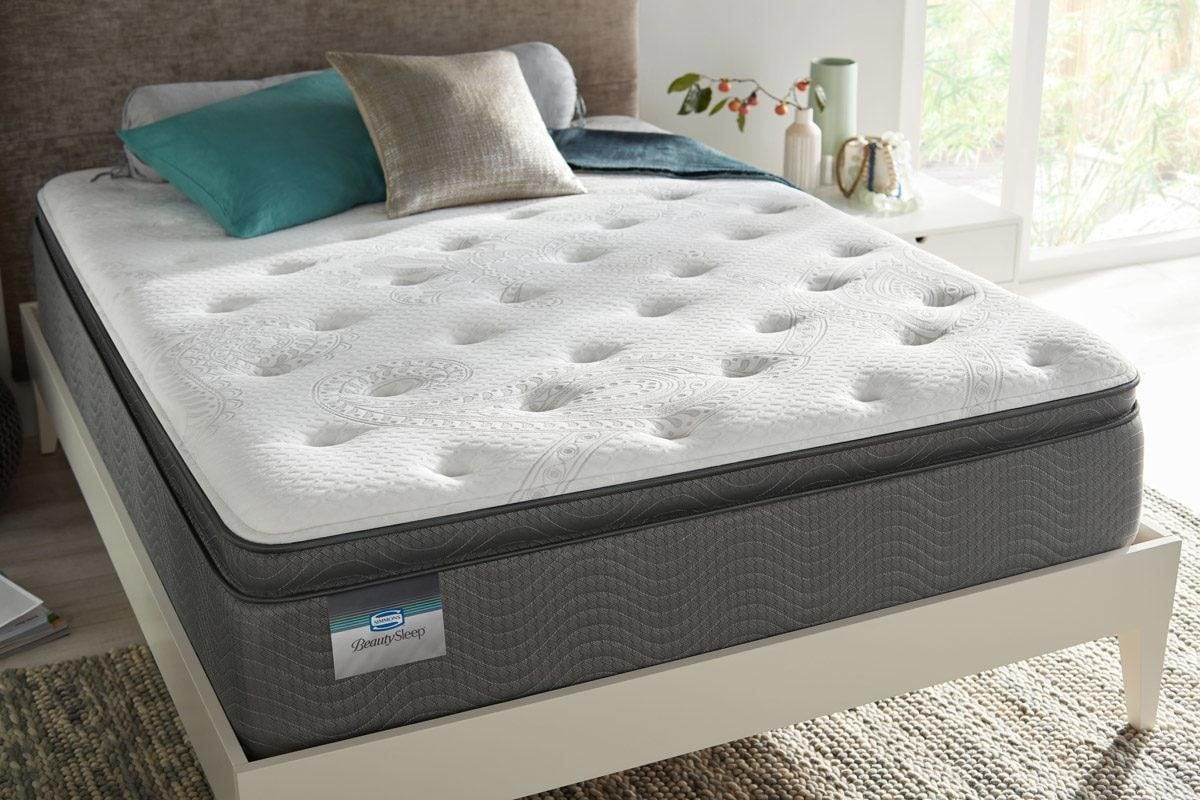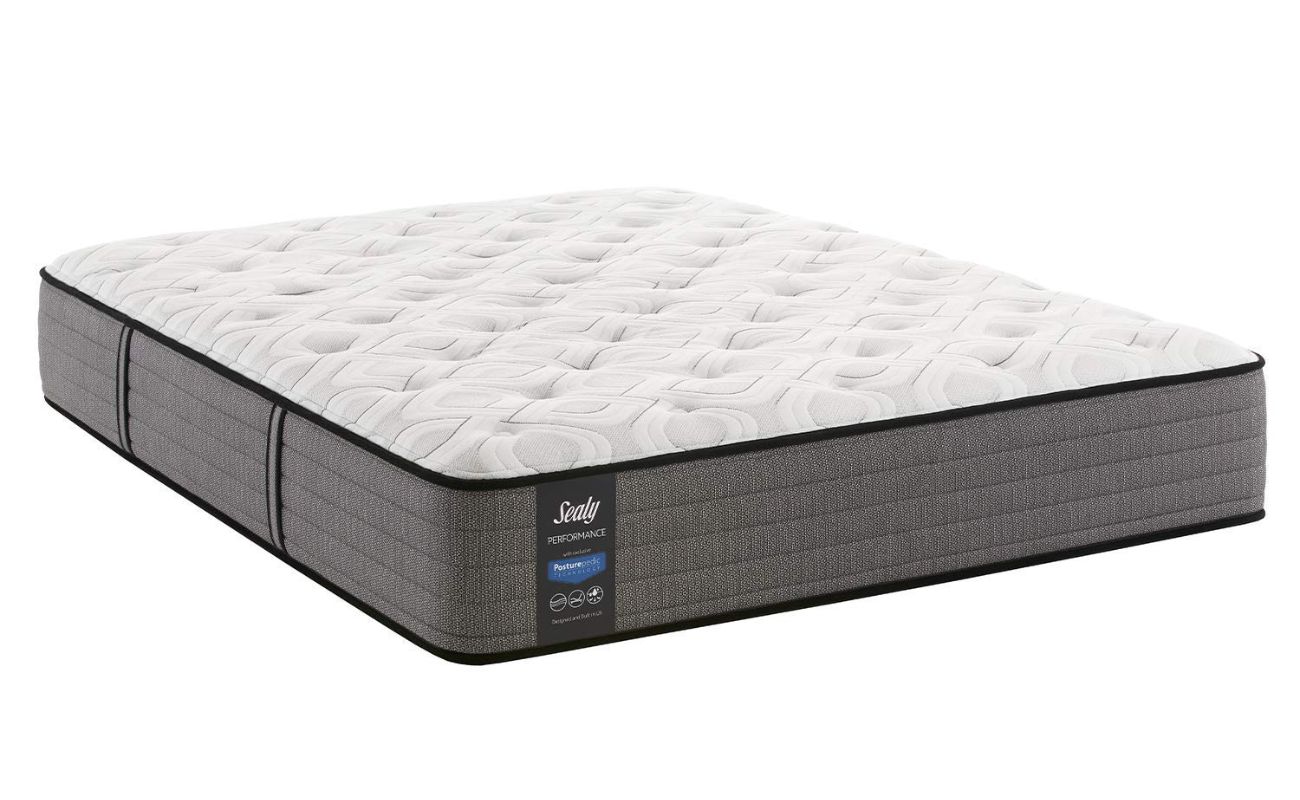Home>Furniture>Bedroom Furniture>What Does Pillow Top Mattress Mean


Bedroom Furniture
What Does Pillow Top Mattress Mean
Modified: March 6, 2024
Discover the meaning of a pillow top mattress and how it can enhance your bedroom furniture. Shop for comfortable and luxurious pillow top mattresses at affordable prices.
(Many of the links in this article redirect to a specific reviewed product. Your purchase of these products through affiliate links helps to generate commission for Storables.com, at no extra cost. Learn more)
Introduction
Welcome to the world of cozy and luxurious sleep! When it comes to creating the perfect bedroom retreat, one essential element that can make all the difference is a high-quality mattress. And if you’re seeking the ultimate combination of comfort and support, a pillow top mattress might be just what you need. In this article, we will dive deep into the world of pillow top mattresses, exploring their definition, construction, benefits, and how to choose the right one for your needs.
Imagine sinking into a cloud of softness as you lay down to sleep. That’s the experience a pillow top mattress offers. With an extra layer of padding stitched on top, these mattresses provide an additional plush layer for enhanced comfort.
The primary purpose of a pillow top mattress is to offer superior cushioning, providing a soft and luxurious sleeping surface. By incorporating a pillow-like layer into the design, these mattresses offer a plush feel, reminiscent of resting your head on a cloud.
Pillow top mattresses are made using a variety of materials, including memory foam, latex foam, fiberfill, and even down feathers. This wide array of materials ensures that you can find a pillow top mattress that suits your individual preferences and needs.
One of the advantages of a pillow top mattress is its ability to provide exceptional comfort and support simultaneously. The extra padding conforms to your body, relieving pressure points and promoting proper spinal alignment, resulting in a more restful and rejuvenating sleep.
However, like any bedding option, pillow top mattresses come with both pros and cons. It’s important to consider these factors before making a purchase decision. While pillow top mattresses offer unparalleled comfort, they may not be suitable for everyone, depending on individual sleep preferences and needs.
In the next sections, we will explore in detail the construction and design of pillow top mattresses, uncover their pros and cons, provide tips on how to choose the right one for you, and offer maintenance and care tips to prolong the lifespan of your pillow top mattress. Let’s dive in and discover the world of cozy and luxurious sleep offered by pillow top mattresses!
Key Takeaways:
- Pillow top mattresses offer a cloud-like softness and superior comfort by adding an extra layer of plush padding. They contour to your body, relieve pressure points, and promote proper spinal alignment for a cozy and luxurious sleep experience.
- While pillow top mattresses provide unparalleled comfort and customizable firmness options, they may require regular maintenance and come with a higher price tag. However, with proper care, they can offer years of restful nights and support for your sleep needs.
Read more: What Is A Pillow Top Mattress
Definition of a Pillow Top Mattress
When shopping for a new mattress, you may come across various terms and styles, including the ever-popular pillow top mattress. But what exactly is a pillow top mattress?
A pillow top mattress is a type of mattress that features an extra layer of padding or cushioning sewn onto the top surface. This layer is typically made from materials such as memory foam, latex foam, fiberfill, or down feathers. The extra padding gives the mattress a plush and luxurious feel, similar to sleeping on a pillow.
Unlike traditional mattresses, which have a consistent firmness throughout, a pillow top mattress offers an additional layer of softness and cushioning on the surface. This layer is usually several inches thick, providing extra comfort and pressure relief. It creates a pillow-like surface that contours to your body, relieving pressure points and promoting spinal alignment.
The pillow top layer is attached directly to the mattress surface and is usually stitched securely in place. This ensures that the padding remains in position, even with regular use and movement during sleep.
One of the distinguishing features of a pillow top mattress is its distinct profile. The extra layer of padding creates a gentle slope or indentation around the edges of the mattress. This design helps to enhance the overall comfort and support, providing a cozy and enveloping sleep surface.
Pillow top mattresses are available in a range of firmness options to suit different sleep preferences. You can find models that offer a plush, medium, or firm feel, allowing you to select the level of softness or support that best suits your needs.
It’s worth noting that pillow top mattresses are often confused with Euro top mattresses. While both styles feature an additional layer of padding, the key difference lies in the construction. In a pillow top mattress, the extra padding is sewn onto the top surface, while in a Euro top mattress, the extra layer is flush with the mattress edges, providing a more seamless appearance.
Now that you have a clearer understanding of what a pillow top mattress is, let’s delve into the construction and design elements that make these mattresses so luxurious and sought after.
Construction and Design
The construction and design of a pillow top mattress play a crucial role in its overall comfort and support. Let’s explore the key components that make up these luxurious mattresses.
The topmost layer of a pillow top mattress is the pillow-like padding itself. This layer can be made from various materials, each offering unique benefits. Memory foam pillow tops contour to your body, relieving pressure points and providing personalized support. Latex foam pillow tops offer excellent breathability and responsiveness, making them ideal for those who tend to sleep hot or prefer a more bouncy feel. Fiberfill pillow tops provide a plush and cozy feel without compromising on support, while down feather pillow tops offer unparalleled softness and natural insulation.
Beneath the pillow top layer lies the comfort layer, which is typically made of high-density foam or pocketed coils. The comfort layer further enhances the cushioning and support of the mattress, ensuring a soft and comfortable sleep surface. This layer is responsible for contouring to your body’s shape and providing pressure relief to promote a restful sleep experience.
The core support layer of a pillow top mattress is what gives the mattress its structural integrity and durability. This layer is often made of individually wrapped coils or high-density foam. Individually wrapped coils offer excellent motion isolation and allow for better airflow, while high-density foam provides long-lasting support and stability.
Additionally, many pillow top mattresses come equipped with edge support systems. These systems use reinforced materials along the perimeter of the mattress to prevent sagging and maintain edge-to-edge support. With proper edge support, you can maximize the usable surface area of the mattress and experience consistent comfort, no matter where you sleep on the bed.
The cover of a pillow top mattress is typically made from a soft and breathable fabric, such as cotton or a blend of natural and synthetic fibers. The cover enhances the overall aesthetics of the mattress while ensuring proper airflow and moisture management.
When it comes to selecting a pillow top mattress, it’s essential to consider the construction and design elements that align with your personal preferences. Factors such as the type of pillow top material, comfort layer thickness and density, support core construction, and edge support can all impact your sleeping experience.
Now that we’ve explored the construction and design of pillow top mattresses, let’s dive into the key benefits and drawbacks they offer, helping you determine if this style of mattress is the right choice for you.
Comfort and Support
When it comes to a good night’s sleep, comfort and support are paramount. A pillow top mattress excels in both areas, providing a sleep surface that is exceptionally comfortable and supportive.
The extra layer of padding in a pillow top mattress adds a luxurious plushness that cradles your body, creating a comfortable and cozy sleep experience. The softness of the pillow top gently conforms to your body’s shape, relieving pressure points and reducing the likelihood of waking up with aches and pains.
The cushioning effect of a pillow top mattress makes it an excellent choice for side sleepers, as it can provide relief for the hips, shoulders, and other sensitive areas. The added softness and contouring capabilities of the pillow top help distribute body weight evenly, reducing pressure on specific areas and promoting proper spinal alignment.
However, comfort is not the only factor to consider. Support is equally important for a restful night’s sleep. A pillow top mattress offers a balanced combination of comfort and support, thanks to its underlying layers.
The comfort layer and core support layer work together to provide the necessary support for your body. The comfort layer molds to your body’s contours, while the support layer ensures that your spine remains properly aligned. This harmonious blend of softness and support allows for a comfortable sleep experience without sacrificing the necessary structural support your body needs.
Furthermore, a pillow top mattress can also help reduce motion transfer. The additional layer of padding absorbs movement, so you’re less likely to be disturbed by a restless sleeping partner. This feature is particularly beneficial for couples or light sleepers who share a bed.
However, it’s important to note that the level of comfort and support offered by a pillow top mattress can vary depending on personal preference and the specific design of the mattress. Some individuals may prefer a firmer feel or may require additional support due to specific health conditions. It’s always recommended to test different mattress options and consider your individual needs before making a final decision.
In the following section, we will explore the pros and cons of pillow top mattresses in more detail, helping you weigh the benefits against any potential drawbacks. This will guide you in making an informed decision when choosing your perfect pillow top mattress.
Pros and Cons
Like any other mattress type, pillow top mattresses come with their own set of advantages and disadvantages. Understanding these pros and cons will help you make an informed decision when considering a pillow top mattress for your bedroom. Let’s take a closer look at the benefits and drawbacks.
Read more: What Is Euro Top Mattress Mean
Pros:
- Luxurious Comfort: The plush pillow top layer provides a luxurious and cozy sleep surface, offering a cloud-like feel.
- Pressure Relief: The extra padding in a pillow top mattress helps relieve pressure points, reducing the likelihood of waking up with stiffness or pain.
- Customizable Firmness: Pillow top mattresses are available in a range of firmness options, allowing you to find a comfort level that suits your preferences.
- Motion Isolation: The added padding absorbs motion, making pillow top mattresses an excellent choice for couples or individuals who are easily disturbed by movements during sleep.
- Breathability: Many pillow top mattresses incorporate materials with good airflow, preventing heat buildup and promoting a cooler sleep environment.
Cons:
- Price: Pillow top mattresses tend to be more expensive compared to other mattress types due to the additional padding and materials used.
- Weight: The extra layer of padding in a pillow top mattress can make the mattress heavier and more difficult to move, especially when it comes to flipping or rotating.
- Maintenance: Pillow top mattresses may require regular fluffing or rotating to maintain the even distribution of the padding and prevent sagging or indentations.
- Not Suitable for Everyone: While pillow top mattresses offer excellent comfort, they may not be the best choice for individuals who prefer a firmer sleep surface or require additional support for specific health conditions.
- Durability: Over time, the pillow top padding may compress and lose its initial plushness, resulting in a less comfortable sleep surface. However, the overall lifespan of a pillow top mattress can still be relatively long if properly maintained.
Considering these pros and cons will help you determine if a pillow top mattress is the right choice for your sleep needs and preferences. It’s important to carefully assess your individual requirements and consider factors such as budget, desired firmness, and any specific health considerations you may have.
Now that we’ve explored the advantages and disadvantages of pillow top mattresses, let’s move on to the next section, where we will discuss how to choose the right pillow top mattress for your needs.
How to Choose the Right Pillow Top Mattress
Choosing the right pillow top mattress involves considering various factors to ensure you find the perfect fit for your sleeping needs and preferences. Here are some essential factors to consider when making your selection:
1. Comfort and Support:
Focus on finding a pillow top mattress that offers the right balance of comfort and support for your body. Test out different models to determine the level of softness or firmness that feels the most comfortable for you. Remember that everyone’s preferences are different, so prioritize your own comfort above all.
Read more: How To Clean A Pillow Top Mattress
2. Pillow Top Material:
Consider the type of pillow top material that suits your needs. Memory foam provides excellent contouring and pressure relief, while latex foam offers more bounce and breathability. Fiberfill and down feather pillow tops provide a plush feel. Choose the material that aligns with your desired level of comfort and support.
3. Mattress Size and Dimensions:
Determine the appropriate mattress size for your needs, taking into account the size of your bedroom and any potential sleep partners. Common sizes include twin, full, queen, king, and California king. Ensure that the mattress dimensions fit your bed frame and provide sufficient space for comfortable sleep.
4. Edge Support:
Consider whether you prefer a pillow top mattress with reinforced edge support. This feature can prevent sagging and provide better stability along the mattress edges, maximizing the usable sleeping surface and reducing the risk of rolling off during the night.
5. Budget:
Set a budget range for your mattress purchase. Pillow top mattresses often come at a higher price point due to the added padding and materials. However, it’s still possible to find options that fit within your budget. Consider the long-term investment in your sleep quality when making your decision.
Read more: What Does Hybrid Mattress Mean
6. Warranty and Return Policy:
Check for the warranty duration and the terms and conditions offered by the manufacturer. A generous warranty can provide peace of mind and protection against potential defects. Additionally, inquire about the return policy to ensure you have the option to exchange or return the mattress if it doesn’t meet your expectations.
It’s also a good idea to read customer reviews and seek recommendations from trusted sources to gain insights into the performance and durability of different pillow top mattress models. Remember that your personal preferences and comfort should be the guiding factors in choosing the right pillow top mattress for you.
Next, we’ll provide some maintenance and care tips to help you prolong the lifespan of your pillow top mattress.
Maintenance and Care Tips
To keep your pillow top mattress in excellent condition and ensure its longevity, it’s important to follow proper maintenance and care practices. Here are some tips to help you take care of your investment:
1. Use a Mattress Protector:
Consider using a mattress protector to safeguard your pillow top mattress from spills, stains, and sweat. A waterproof and breathable protector can prevent liquids from penetrating the mattress and protect against dust mites and allergens.
2. Rotate and Flip:
Rotate your pillow top mattress regularly, approximately every three to six months, to even out wear. If your mattress is double-sided, flip it over occasionally. This will prevent sagging and indentations in specific areas and promote more balanced wear over time.
Read more: What Does A Plush Mattress Mean
3. Clean Regularly:
Vacuum your pillow top mattress regularly to remove dust, allergens, and any loose particles that may have accumulated. Avoid using harsh chemicals or cleaning solutions to avoid damaging the fabric or padding. Instead, spot clean any stains with a mixture of mild detergent and warm water.
4. Air Out Your Mattress:
Allow your pillow top mattress to breathe by periodically removing the sheets and bedding and letting it air out. This will help dissipate any trapped moisture and keep the mattress fresh and odor-free.
5. Avoid Jumping on the Bed:
Pillow top mattresses are designed for sleeping, so avoid jumping or standing on the mattress. Excessive weight and pressure can damage the padding and affect the overall comfort and support of the mattress.
6. Maintain Proper Bedding Support:
Ensure your pillow top mattress is properly supported by a sturdy and suitable bed frame or foundation. This will help evenly distribute the weight and minimize the risk of sagging or premature wear.
Read more: What Does Hybrid Mean In A Mattress
7. Follow Manufacturer Guidelines:
Always refer to the manufacturer’s guidelines or care instructions provided with your mattress. Different mattress models may have specific recommendations for care and maintenance, so it’s important to follow these guidelines to ensure warranty coverage and preserve the mattress’s quality.
By following these maintenance and care tips, you can prolong the lifespan of your pillow top mattress and maximize its comfort and support for years to come.
Now, let’s debunk some common misconceptions about pillow top mattresses in our next section.
Common Misconceptions
When it comes to pillow top mattresses, there are several misconceptions that can cloud one’s perception of this sleep surface. Let’s debunk some of the most common misconceptions associated with pillow top mattresses:
1. Pillow Top Mattresses Always Have a Soft Feel:
While pillow top mattresses are known for their plushness, it’s important to note that they come in various levels of firmness. You can find pillow top mattresses that offer a firmer feel, providing ample support while still incorporating the extra layer of padding for added comfort.
2. Pillow Top Mattresses Are Only for People with Back Pain:
Pillow top mattresses are often recommended for individuals with back pain due to their ability to conform to the body’s shape and provide pressure relief. However, they are not exclusively designed for people with back pain. Pillow top mattresses can benefit anyone seeking a luxurious and comfortable sleep surface, regardless of their back health.
3. Pillow Top Mattresses Sag Easily:
The misconception that pillow top mattresses sag easily is not entirely accurate. While any mattress may eventually show signs of wear over time, proper maintenance and care can significantly extend the lifespan of a pillow top mattress. Rotating the mattress regularly and using a supportive bed frame can help prevent sagging and maintain the mattress’s integrity.
4. Pillow Top Mattresses Are Hot to Sleep On:
While some pillow top mattresses may retain more heat than others, modern advancements in mattress design have addressed this issue. Many pillow top mattresses now incorporate breathable materials and cooling technologies to prevent heat buildup and promote a cooler sleep surface. Choosing a pillow top mattress with proper ventilation can help negate this misconception.
5. All Pillow Top Mattresses Are Expensive:
While it’s true that pillow top mattresses can be pricier than traditional mattresses, not all pillow top options are expensive. There are budget-friendly options available that still offer the plush comfort and support of a pillow top. It’s important to explore different brands and models to find a pillow top mattress that fits within your budget without compromising quality.
6. Pillow Top Mattresses Require Constant Fluffing:
While it’s recommended to rotate a pillow top mattress regularly, it does not require constant fluffing. The extra layer of padding in a pillow top mattress is designed to maintain its shape and resilience over time. Fluffing helps prevent uneven wear, but it is not something that needs to be done daily or excessively.
By debunking these common misconceptions, we can better understand and appreciate the true benefits and qualities of pillow top mattresses. Now, let’s conclude our exploration of pillow top mattresses.
Read more: What Is A Plush Mattress Mean
Conclusion
A pillow top mattress offers the perfect combination of comfort and support, providing a luxurious sleep experience for those who crave a plush and enveloping sleep surface. With its additional layer of padding sewn onto the top surface, a pillow top mattress offers unparalleled cushioning that contours to your body, relieving pressure points and promoting proper spinal alignment.
Throughout this article, we’ve explored the definition, construction, and design of a pillow top mattress. We’ve discussed its benefits, such as superior comfort, pressure relief, and customizable firmness options. We’ve also considered some drawbacks, including the higher price range and potential maintenance requirements.
Choosing the right pillow top mattress involves considering factors such as personal comfort preferences, pillow top material, mattress size and dimensions, edge support, budget, and warranty coverage. By mindful selection, you can ensure that the mattress matches your specific sleep needs and enhances your overall sleep quality.
It’s crucial to take proper care of your pillow top mattress to maintain its longevity and performance. Use a mattress protector, rotate and flip the mattress periodically, keep it clean and well-aired, and follow the manufacturer’s guidelines for maintenance. By following these simple steps, you can enjoy years of restful nights on your plush and luxurious pillow top mattress.
Lastly, we debunked common misconceptions about pillow top mattresses, dispelling myths about their firmness, durability, and thermal properties. Understanding these misconceptions allows you to make an informed decision and appreciate the true qualities and benefits of a pillow top mattress.
Whether you’re seeking the ultimate in comfort, pressure relief, or a sleep surface that makes you feel like you’re floating on a cloud, a pillow top mattress could be the perfect choice for your bedroom. So, dive in, explore your options, and experience the cozy and luxurious sleep of a pillow top mattress!
Frequently Asked Questions about What Does Pillow Top Mattress Mean
Was this page helpful?
At Storables.com, we guarantee accurate and reliable information. Our content, validated by Expert Board Contributors, is crafted following stringent Editorial Policies. We're committed to providing you with well-researched, expert-backed insights for all your informational needs.








